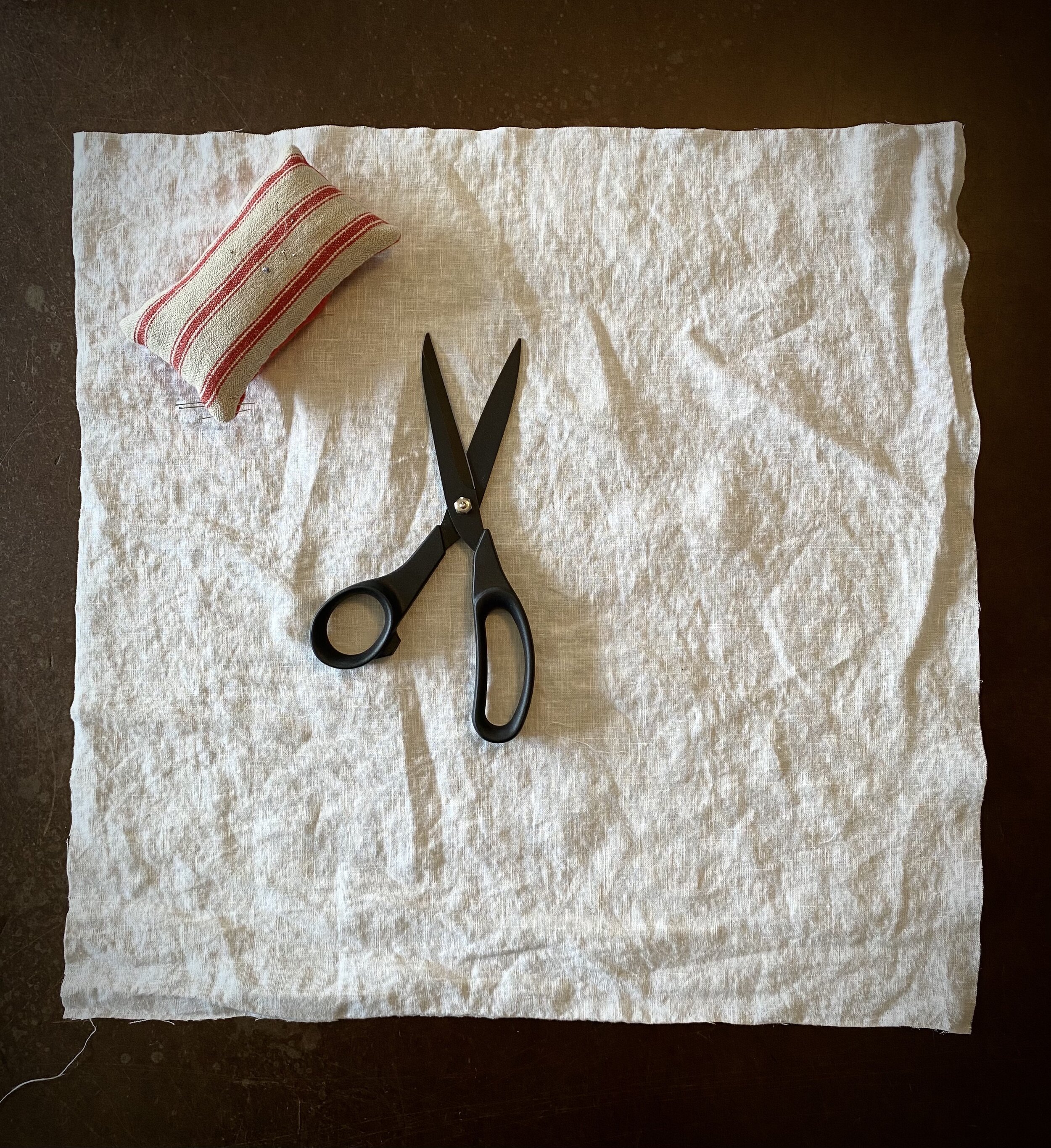Welcome to the Hand-Sewn Linen Napkins Workshop!
Workshop Index
Linen Napkin Materials and Supplies
Cutting Out A Linen Napkin
Hand-sewing Foundations
Hemming Your Napkins
Workshop Survey
Welcome! I am so excited to hand sew a set of linen napkins with you! Hand sewing has the power to calm the mind and re-connect you to yourself. Stitching a set of napkins will give you a sense of accomplishment and a re-usable, beautiful table setting you can use for years to come. This class is designed to walk you through how to cut out a napkin without a pattern and hem it by hand without using a sewing machine! Using a series of pre-recorded, close-captioned videos this class will teach you to pick out materials, practice hand sewing basics, cut out your linen and hem your napkin. We will use a technique called pulling threads to remove a thread from the weave-structor of the textile to cut a perfectly straight edge and then use hand sewing techniques to hand-hem the edge of the fabric. This project is small enough you can take it anywhere! That is the beauty of hand sewing.
This class is designed for you to go at your own pace using the pre-recorded videos for instruction. Pause, rewatch and review to hone your hemming skills. The goal of this class is to teach you to cut out two napkins and hem them to have a functional, beautiful and re-usable addition to your table. The second goal of this class is to teach you hand-hemming which is a remarkably transferable skill to other areas of hand-sewing for garment construction. Hemming is also known as felling. Think “to fell” or “to fold over.” Hems are felled but so are some seams and linings. These skills will serve you beyond napkins. Imagine the possibilities!
This class is taught by Sarah Woodyard, to learn more about Sarah please click here. If you have any questions or need to schedule a private session please email Sarah at sewncompany@gmail.com. Let’s get stitching to remember what our hands can do!









